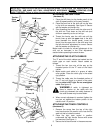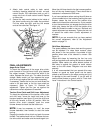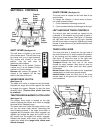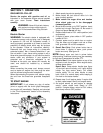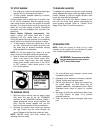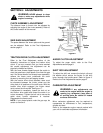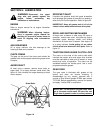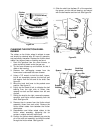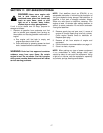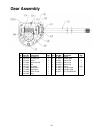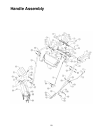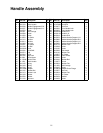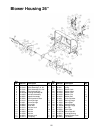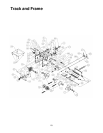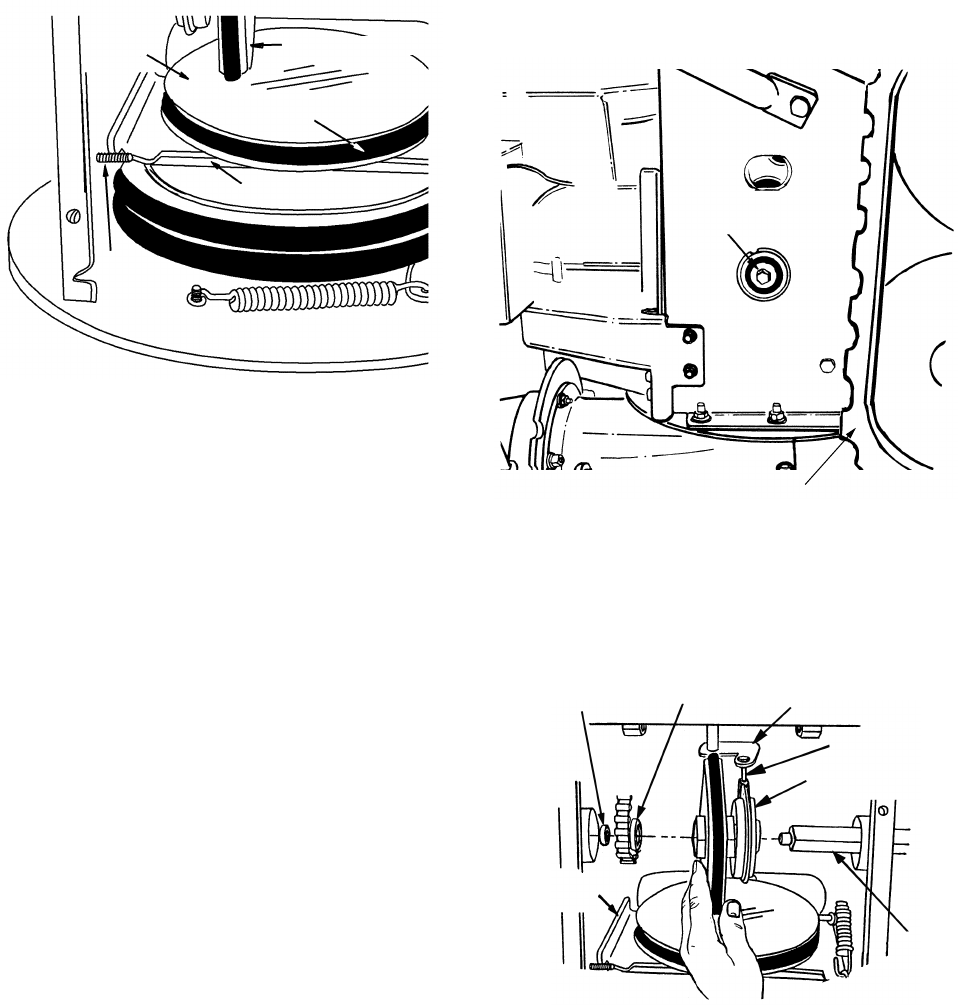
16
Figure 22
CHANGING THE FRICTION WHEEL
RUBBER
The rubber on the friction wheel is subject to wear
and should be checked after 25 hours of operation,
and periodically thereafter. Replace the friction wheel
rubber if any signs of wear or cracking are found.
1. Drain the gasoline from the snow thrower, or
place a piece of plastic under the gas cap.
2. Tip the snow thrower up and forward, so that it
rests on the housing.
3. Remove four self-tapping screws from the
frame cover underneath the snow thrower.
4. Using a 7/8" wrench to hold the shaft, loosen,
but do not completely remove, the hex bolt and
bell washer from the left end of the shaft. See
figure 23.
5. Move the track lock lever to the packed snow
position. See figure 15.
6. Lightly tap the head of bolt to dislodge the ball
bearing from the right side of frame, then
remove hex bolt and bell washer from left end
of shaft.
7. Sliding the shaft to the right, remove the spacer,
sprocket, and friction wheel assembly from the
shaft. See figure 24.
8. Remove the six screws from the friction wheel
assembly (three from each side). Remove the
friction wheel rubber from between the friction
wheel plate.
9. Reassemble new friction wheel rubber to the
friction wheel assembly, tightening the six
screws in rotation and with equal force.
10. Position the friction wheel assembly up onto the
pin of the shift rod assembly, and slide the shaft
through the friction wheel. See figure 24.
11. Slide the shaft into the hex I.D. of the sprocket,
the spacer, and the left ball bearing, and secure
with the bell washer and hex bolt. See figure 24.
Figure 23
Figure 24
Friction
Wheel
Disc
Friction Wheel
Stop
Bolt
Support Bracket
Drive Belt
Hex Nut
Bell Washer
Track
Spacer
Sprocket
Shift Rod
Assembly
Pin
Friction Wheel
Assembly
Shaft
Support
Bracket



